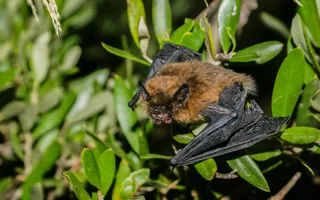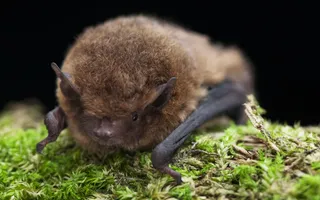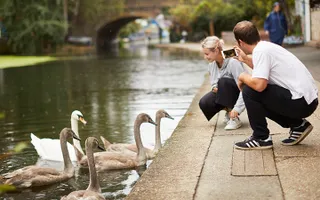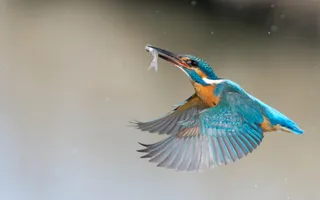If you're in the vicinity of one of our canals or rivers at dusk, look out for bats. Whether you're out in the country or the centre of a city, you'll have a good chance of spotting one on a calm evening.
Our environment team work hard to make sure that our 250-year-old network of tunnels, bridges and aqueducts welcomes a variety of wildlife and with suitable roosting areas for bats. Canals provide a great source of food for bats, with protected and sheltered highways for them to travel. So, you have a good chance of seeing these fascinating creatures if you're on our waterways at the right time.
When to spot bats
Bats are easier to spot during the summer months when out hunting for insects.
But if you're looking for a spooky bat around Halloween, you can still seek out these much-maligned and under-appreciated creatures before they hibernate for the winter. They're fascinating to watch as they dart about, catching their prey and showing off their agility.
Top bat-spotting tips
Here are our top tips to see a bat on our canals.
1. Choose a dark area
Many bats avoid bright street lighting and prefer to fly in the dark, so try to find a location with as little light pollution as possible. Don't forget to take your torch for the walk home.
2. Arrive just before the sun sets
Bats are easiest to spot around dusk when they come out to feed.
3. Watch the water
Bats need to hydrate themselves as much as we do. So, you'll often see them swooping down to take a drink from the water.
You'll also spot Daubenton's bats (sometimes known as water bats) hunting just over the water. They catch insects with their feet and often feast while they're still flying.
4. Go out on a dry, still night
Bats don't like hunting insects in wet weather, as the moisture in the air confuses their echolocation system. Flying in rain or wind uses up a lot of energy hunting without much in return.
5. Choose a good spot
Stand on a bridge to get a good view of the water in both directions. Alternatively, find a straight part of the waterway so that you can see as far as possible. Bats often feed in sheltered areas, where swarms of flying insects gather, such as winding holes bordered by mature trees. Wider stretches of the canal are good, too.
What bat species will you see?
Our canals are home to a variety of different bats. Daubenton's and pipistrelle bats are the most common species by water, but you might also see any of the 18 other species resident in the UK.









